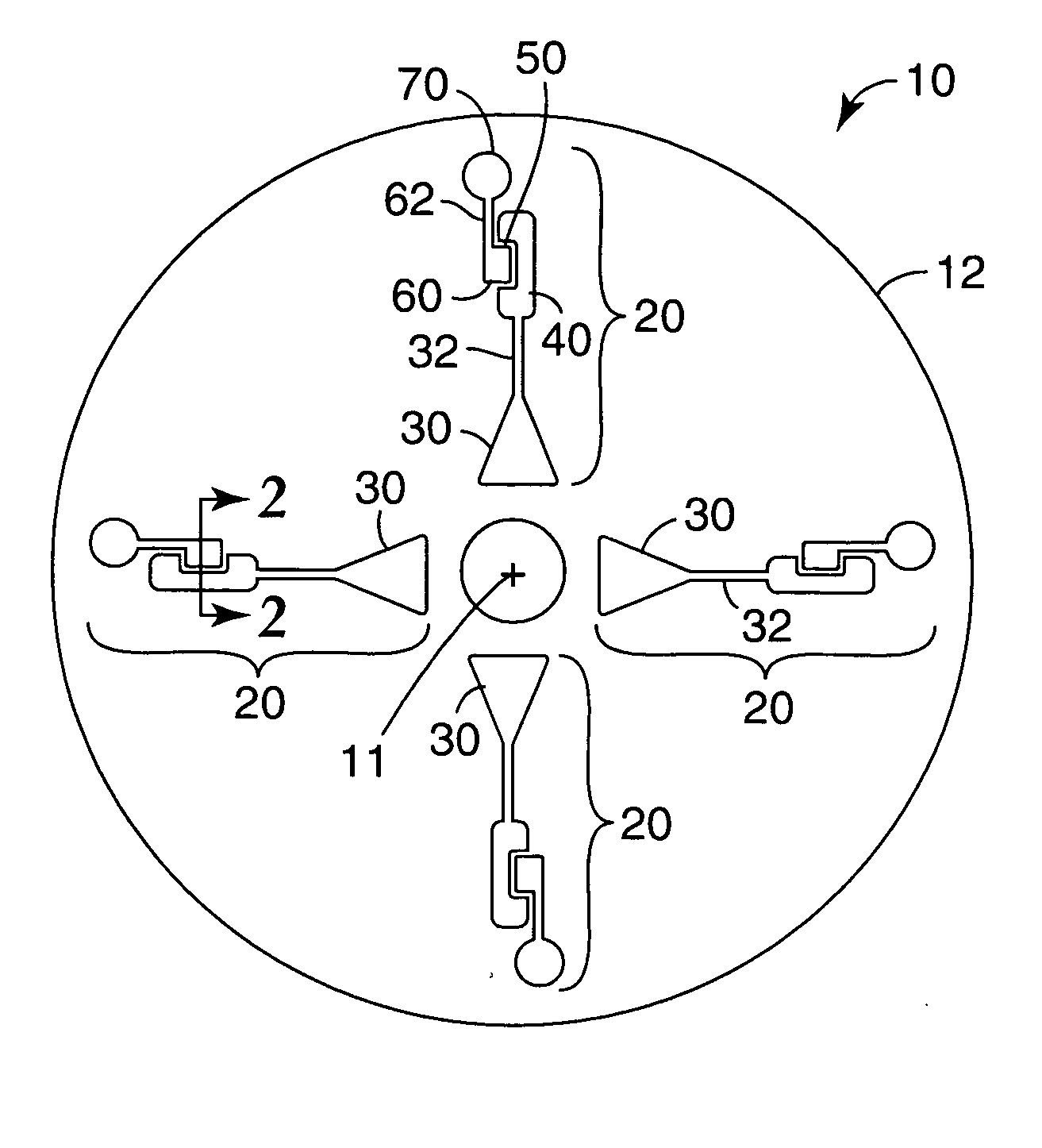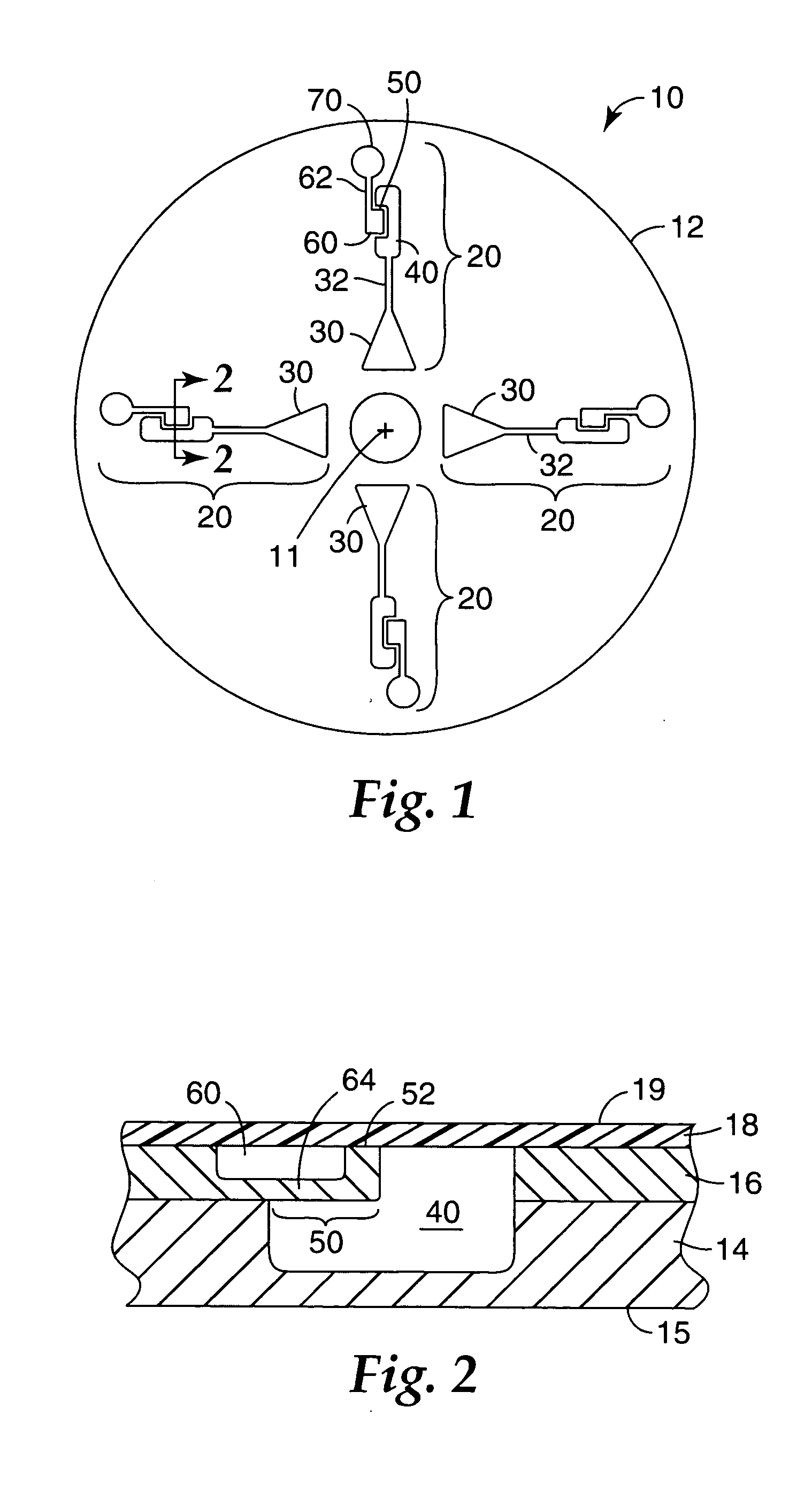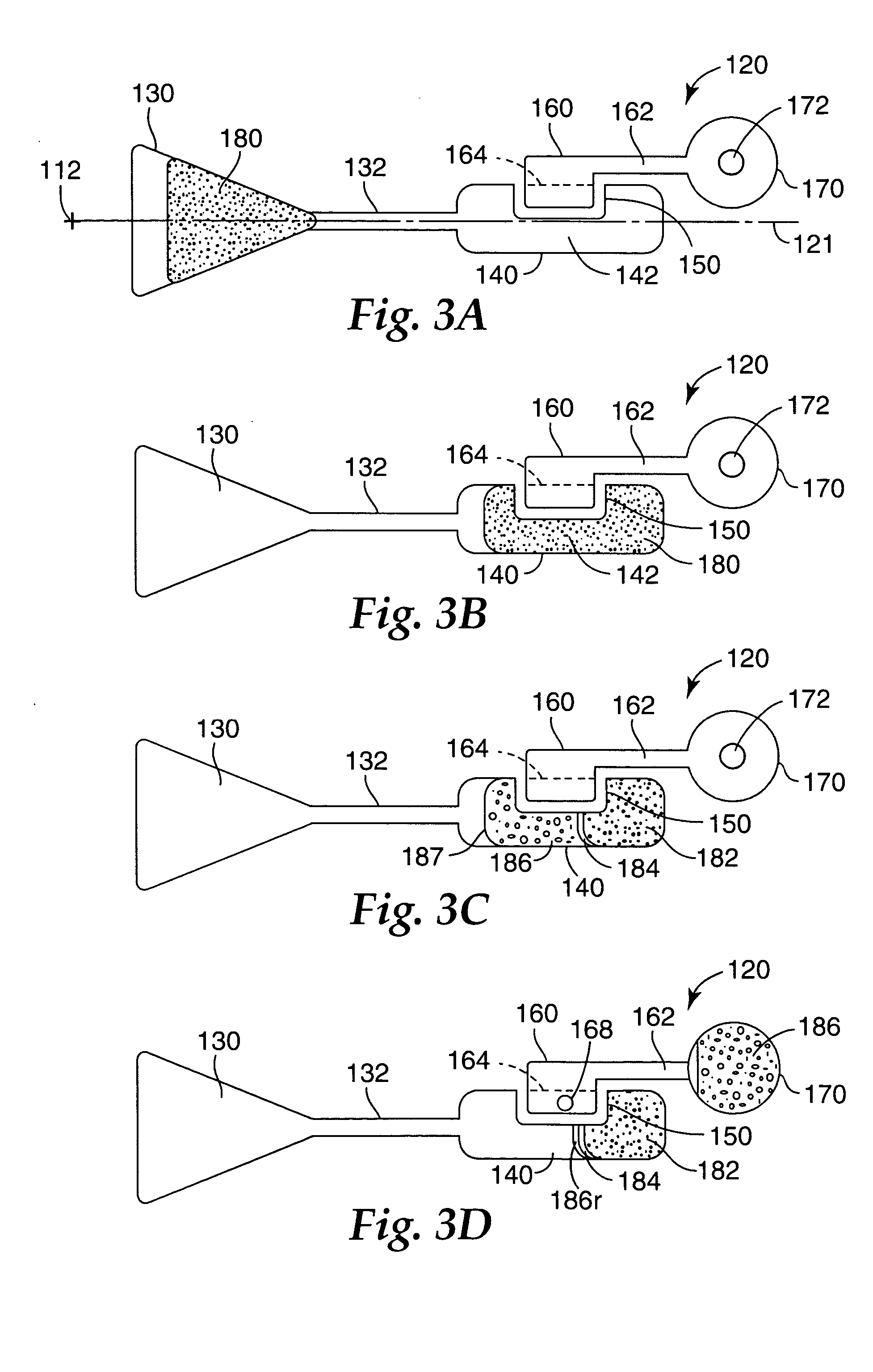Variable valve apparatus and methods
a valve and variable technology, applied in the field of sample processing devices, can solve the problems of fluid transfer between different features of the device, transfer process, high cost, complexity and associated high cost, and achieve the effect of lowering the surface or interfacial tension of the medium
- Summary
- Abstract
- Description
- Claims
- Application Information
AI Technical Summary
Benefits of technology
Problems solved by technology
Method used
Image
Examples
example 1
Preparation of Solid Phase Material: Ammonia Form with TRITON-X 100
[0183] A 3M No. 2271 EMPORE Extraction Chelating Disk was placed in a glass filter holder. The extraction disk was converted into the ammonia form, following the procedure printed on the package insert. The disk placed in a vial and was submerged in a 1% TRITON-X 100 (Sigma-Aldrich, St. Louis, Mo.) solution (0.1 gram (g) of TRITON-X 100 in 10 mL of water), mixing for about 6-8 hours on a Thermolyne Vari-Mix Model M48725 Rocker (Barnstead / Thermolyne, Dubuque, Iowa). The disk was placed in glass filter holder, dried by applying a vacuum for about 20 minutes (min), and then dried overnight at room temperature (approximately 21° C.), taking care not to wash or rinse the disk.
example 2a
Effect of Inhibitor / DNA on PCR: Varying Inhibitor Concentration with Fixed DNA Concentration
[0184] A dilution series of inhibitors were made prior to spiking with clean human genomic DNA in order to study the effect of inhibitor on PCR. To 10 μL of 15 nanograms per microliter (ng / μL) human genomic DNA, 1μL of different Mix I (neat or dilutions thereof) was added (Samples 2—no inhibitor added, 2D—neat, 2E—1:10, 2F—1:30, 2G—1:100, 2H—1:300) and vortexed. Two (2) μL aliquots of each sample were taken for 20 μL PCR. The results are shown in Table 2.
[0185] Mix I: one hundred (100) μL of whole blood was added to 1 μL of neat TRITON-X 100. The solution was incubated at room temperature (approximately 21° C.) for about 5 minutes, vortexing the solution intermittently (for approximately 5 seconds every 20 seconds). The solution was investigated to make sure that it was transparent before proceeding to the next step. The solution was spun in an Eppendorf Model 5415D centrifuge at 400 rcf fo...
example 2b
Effect of Inhibitor / DNA on PCR: Varying DNA Concentration with Fixed Inhibitor Concentration
[0186] To 10 μL of human genomic DNA, 1 μL of 1:3 diluted Mix I (described above) was added. DNA concentrations that were examined were the following: Samples 2J—15 ng / μL, 2K—7.5 ng / μL, 2L—3.75 ng / μL, 2M—1.5 ng / μL. Two (2) μL aliquots of each sample were taken for 20 μL PCR. The results are shown in Table 2.
PUM
| Property | Measurement | Unit |
|---|---|---|
| Length | aaaaa | aaaaa |
| Fraction | aaaaa | aaaaa |
| Molar density | aaaaa | aaaaa |
Abstract
Description
Claims
Application Information
 Login to View More
Login to View More - R&D
- Intellectual Property
- Life Sciences
- Materials
- Tech Scout
- Unparalleled Data Quality
- Higher Quality Content
- 60% Fewer Hallucinations
Browse by: Latest US Patents, China's latest patents, Technical Efficacy Thesaurus, Application Domain, Technology Topic, Popular Technical Reports.
© 2025 PatSnap. All rights reserved.Legal|Privacy policy|Modern Slavery Act Transparency Statement|Sitemap|About US| Contact US: help@patsnap.com



